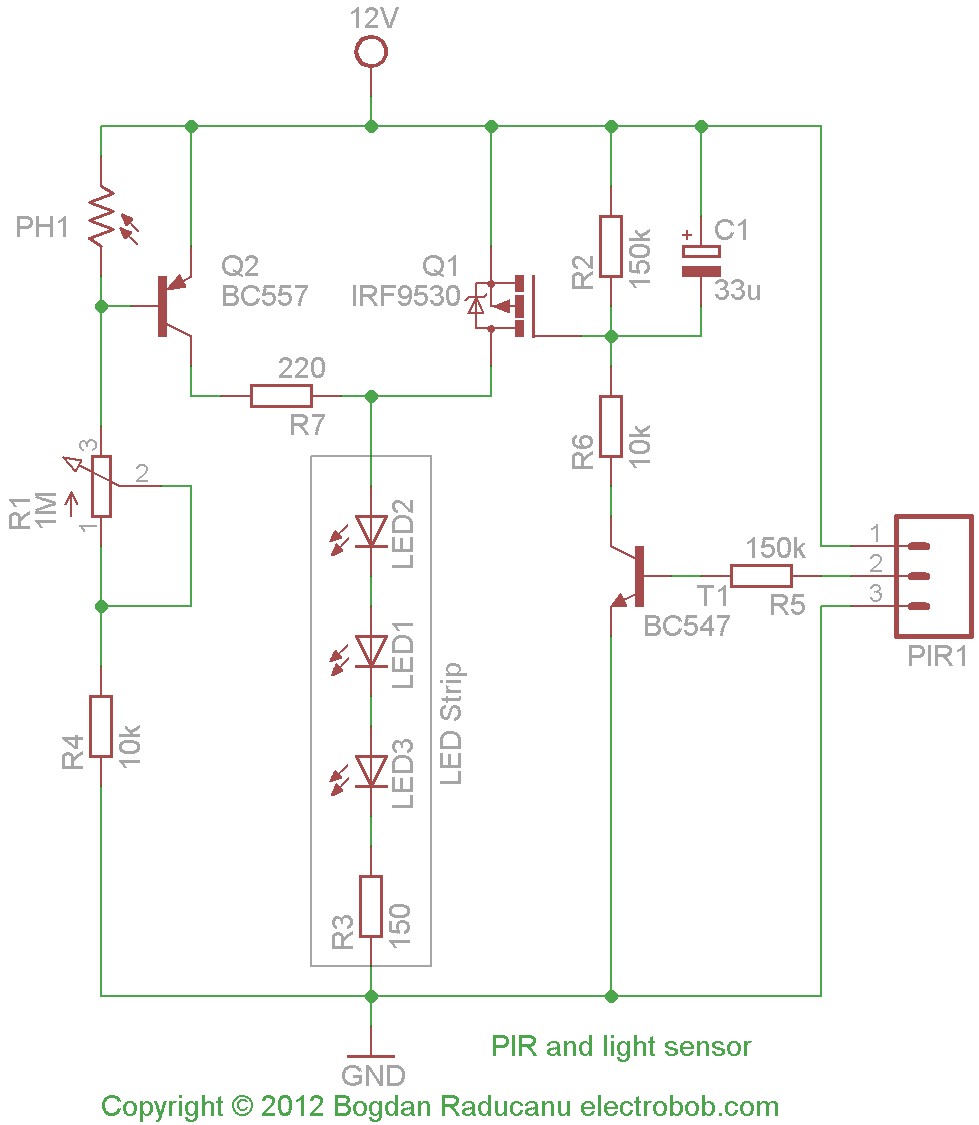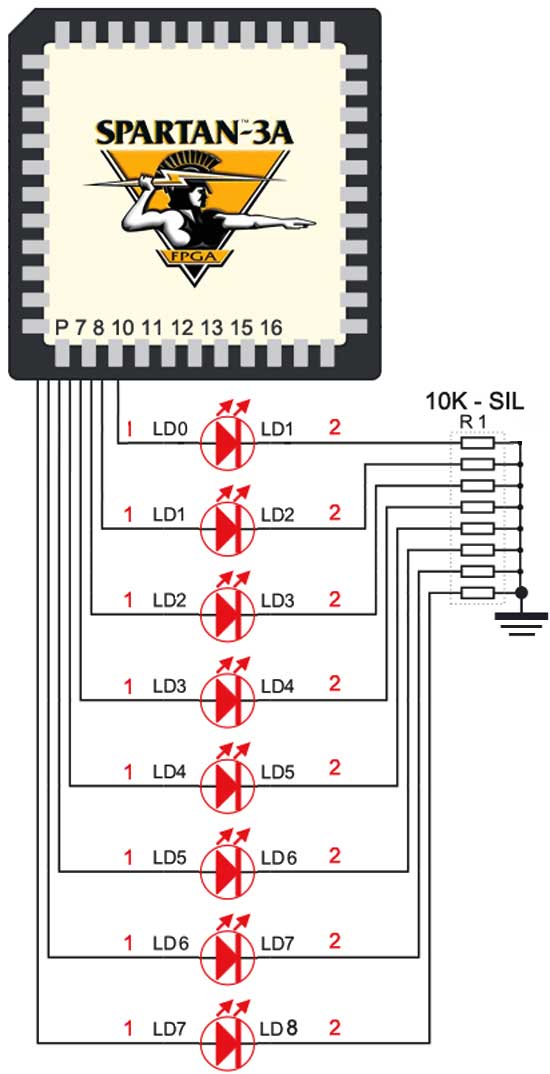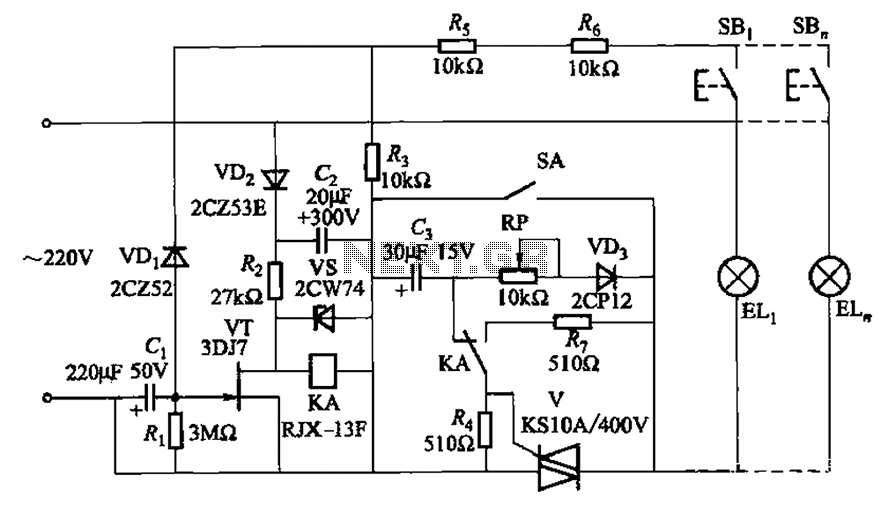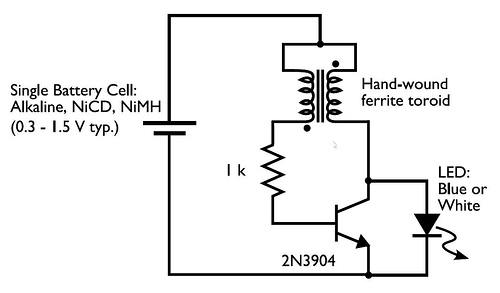
The LED car voltmeter (2)

This document introduces an LED car voltmeter constructed using the op-amp LM312 and LED components. It is designed to display six voltage levels ranging from 10V to 15V, with each level representing a 1V increment. The working principle of the circuit involves several components, including a regulator circuit, a reference voltage (Vref) circuit, a voltage sampling circuit, and an LED display drive circuit. The regulator circuit comprises a three-terminal voltage regulator integrated circuit (IC), a potentiometer (RP), and a resistor (R4).
The LED car voltmeter circuit is an essential tool for monitoring vehicle battery voltage. The op-amp LM312 serves as the core component, providing the necessary amplification and precision for voltage measurement. The circuit operates within a voltage range of 10V to 15V, effectively indicating the battery status through a series of LEDs.
The regulator circuit ensures that the voltage supplied to the op-amp and other components remains stable, regardless of fluctuations in input voltage. This is achieved through a three-terminal voltage regulator IC, which maintains a constant output voltage. The potentiometer (RP) allows for fine-tuning of the output voltage, enabling calibration of the voltmeter for accurate readings. Resistor R4 is used to limit the current flowing through the circuit, protecting sensitive components from damage.
The Vref circuit generates a stable reference voltage that is crucial for the accurate operation of the op-amp. This reference voltage is compared with the sampled input voltage from the vehicle's battery. The voltage sampling circuit captures the battery voltage and feeds it into the op-amp for processing.
The LED display drive circuit is responsible for illuminating the appropriate LED corresponding to the measured voltage level. As the battery voltage varies, the op-amp outputs a signal that activates the corresponding LED in the display, providing a clear visual indication of the battery's voltage status.
In summary, this LED car voltmeter circuit efficiently monitors vehicle battery voltage using an LM312 op-amp and a well-structured design comprising a regulator circuit, Vref circuit, voltage sampling circuit, and LED display drive circuit. This configuration ensures reliable performance and accurate voltage readings, making it a valuable tool for automotive applications.Here is to introduce the LED car voltmeter which is made of the op-amp LM312 and LED, it can display 6 gears of voltages, 10-15V, each gear is 1V. The working principle of the circuit The LED car voltmeter consists of the regulator circuit, Vref circuit, sampling voltage circuit and LED display drive circuit, see as figure 7-76.
The regulator circui t consists of the 3-terminal regulator circuit IC, potentiometer RP and resistor R4. 🔗 External reference
The LED car voltmeter circuit is an essential tool for monitoring vehicle battery voltage. The op-amp LM312 serves as the core component, providing the necessary amplification and precision for voltage measurement. The circuit operates within a voltage range of 10V to 15V, effectively indicating the battery status through a series of LEDs.
The regulator circuit ensures that the voltage supplied to the op-amp and other components remains stable, regardless of fluctuations in input voltage. This is achieved through a three-terminal voltage regulator IC, which maintains a constant output voltage. The potentiometer (RP) allows for fine-tuning of the output voltage, enabling calibration of the voltmeter for accurate readings. Resistor R4 is used to limit the current flowing through the circuit, protecting sensitive components from damage.
The Vref circuit generates a stable reference voltage that is crucial for the accurate operation of the op-amp. This reference voltage is compared with the sampled input voltage from the vehicle's battery. The voltage sampling circuit captures the battery voltage and feeds it into the op-amp for processing.
The LED display drive circuit is responsible for illuminating the appropriate LED corresponding to the measured voltage level. As the battery voltage varies, the op-amp outputs a signal that activates the corresponding LED in the display, providing a clear visual indication of the battery's voltage status.
In summary, this LED car voltmeter circuit efficiently monitors vehicle battery voltage using an LM312 op-amp and a well-structured design comprising a regulator circuit, Vref circuit, voltage sampling circuit, and LED display drive circuit. This configuration ensures reliable performance and accurate voltage readings, making it a valuable tool for automotive applications.Here is to introduce the LED car voltmeter which is made of the op-amp LM312 and LED, it can display 6 gears of voltages, 10-15V, each gear is 1V. The working principle of the circuit The LED car voltmeter consists of the regulator circuit, Vref circuit, sampling voltage circuit and LED display drive circuit, see as figure 7-76.
The regulator circui t consists of the 3-terminal regulator circuit IC, potentiometer RP and resistor R4. 🔗 External reference





